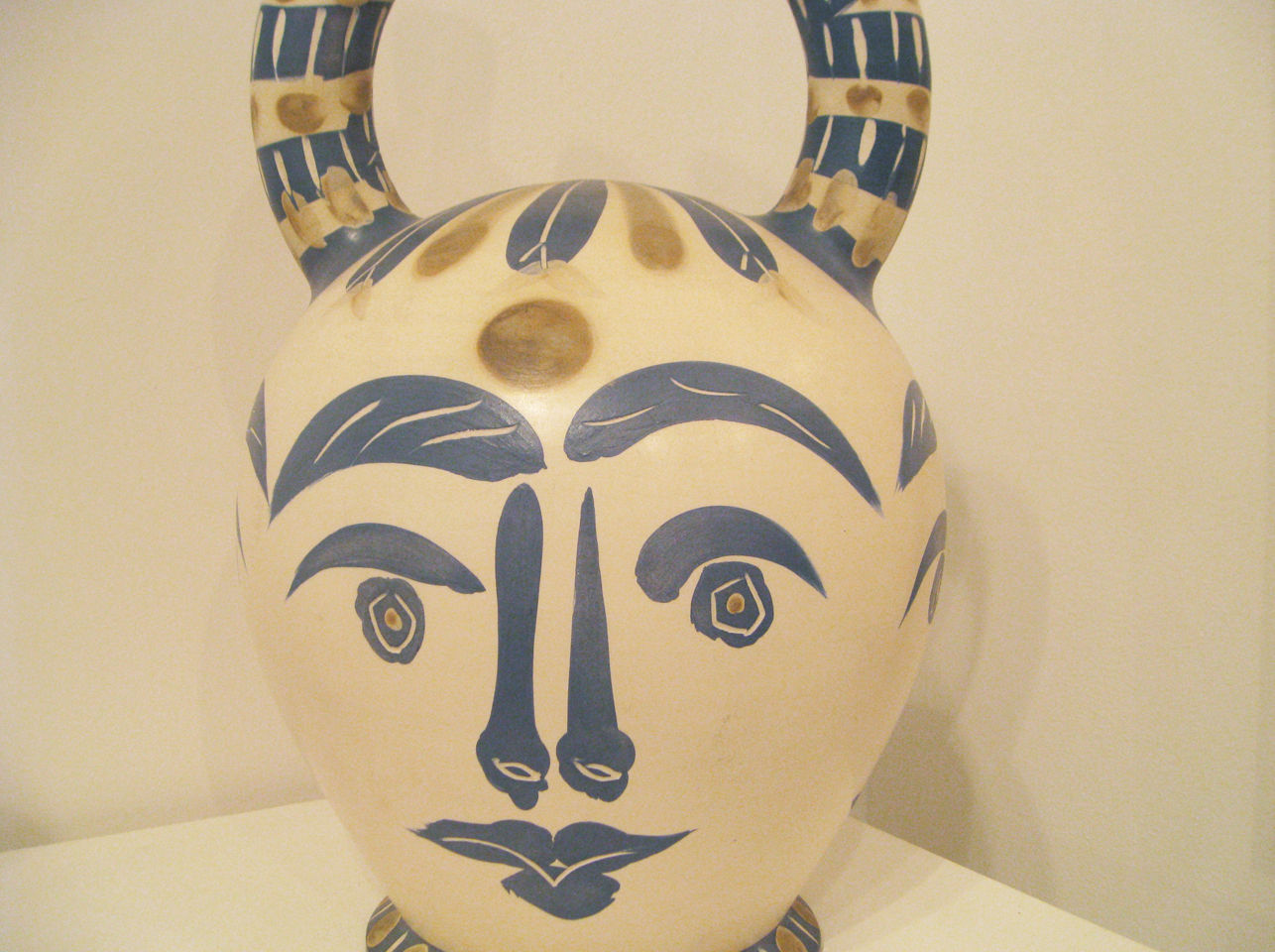
NEW YORK—A collection of important Picasso vases, pitchers, jugs and plates are for sale at the Phillips de Pury “Evening Editions” auction next week. The rare limited-edition ceramics are from the Madoura pottery workshop in Vallauris in the South of France. Picasso first discovered the workshop in 1946 and visited over a 24-year period creating hundreds of pieces inspired by his sketches.
The graphic ceramics feature Picasso’s bold, expressive facial imagery as well a several interpretations of a goat motif. Most of the works are marked with identifying pottery stamps, “Edition Picasso Empreinte” or “Originale de Picasso,” along with “Madoura Plein Feu” and some of the pieces include original Madoura pottery studio tan burlap bags.
Christie’s is also selling Picasso ceramics. At the end of June, the auction house will sell 550 Picasso ceramics acquired directly from the Madoura workshop. The works are being offered for by Alain Ramie, whose parents owned the workshop. Christie’s describes Ramie as “a friend and colleague of Picasso’s for many years.” “Picasso Ceramics: The Madoura Collection” will be held in South Kensington, London. Christie’s “Prints and Multiples” sale in April at Rockefeller Center in New York will also feature a small selection of Picasso ceramics.
The Phillips de Pury “Evening Editions” sale is on April 25 at the Park Avenue gallery.
All photos by Arts Observer
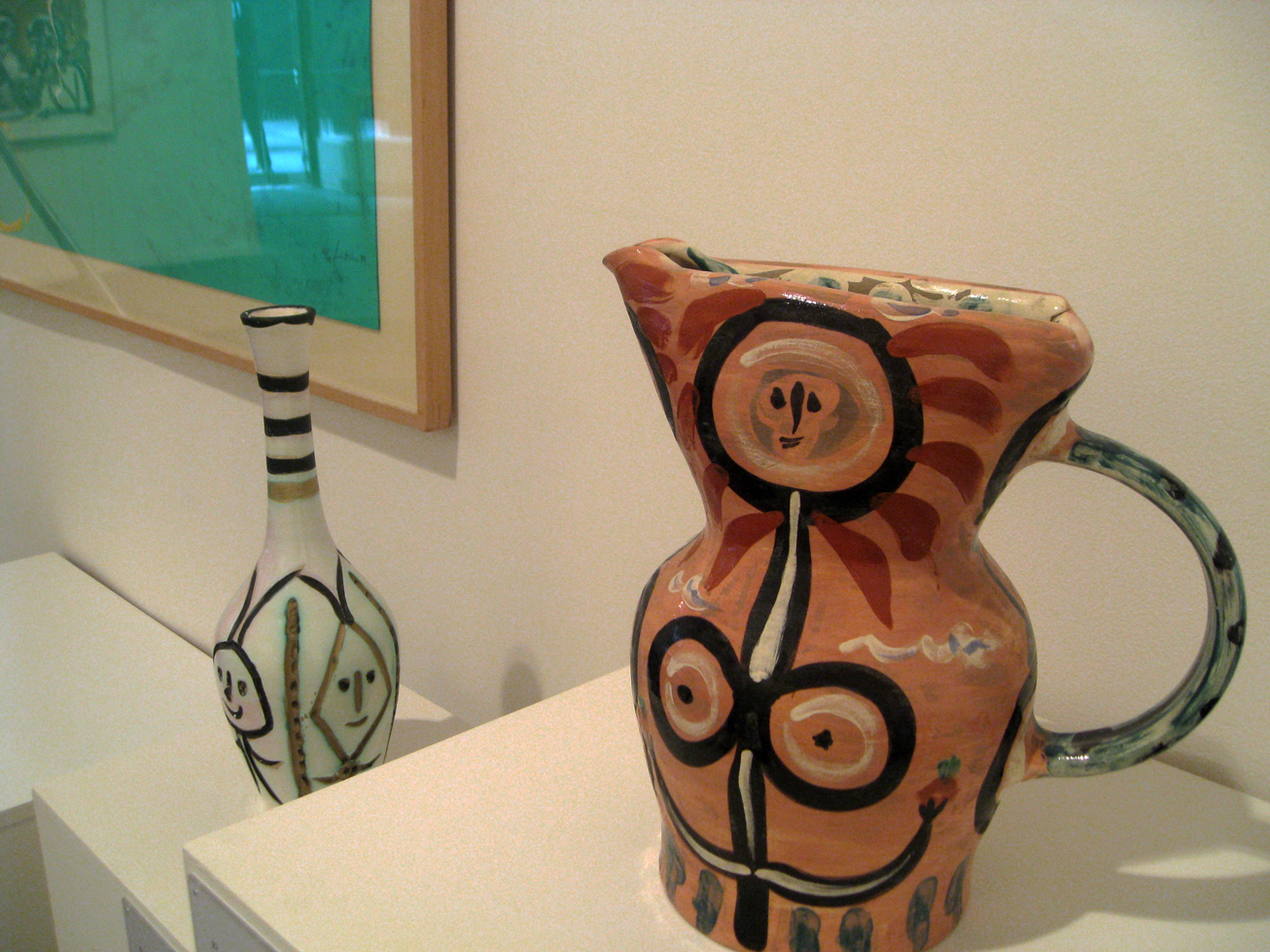
Above, From left, “Engraved Bottle,” 1954 (white earthenware painted in paraffin, white enamel, black and beige with boring-rod engraving), turned vase, incised numbered 42/100; and “Flower Women,” 1948 (white earthenware painted in pink, red, black, and blue with oxides and patina under brushed glaze), turned pitcher, incised ‘Edition Picasso,’ ‘Madoura,’ ‘R 152,’ numbered 132/175. Top of page, “Aztec Vase with Four Faces,” 1957 (white earthenware painted in blue, beige and white, with knife engraving), turned vase, incised ‘Edition Picasso,’ ‘Madoura,’ numbered 72/100.
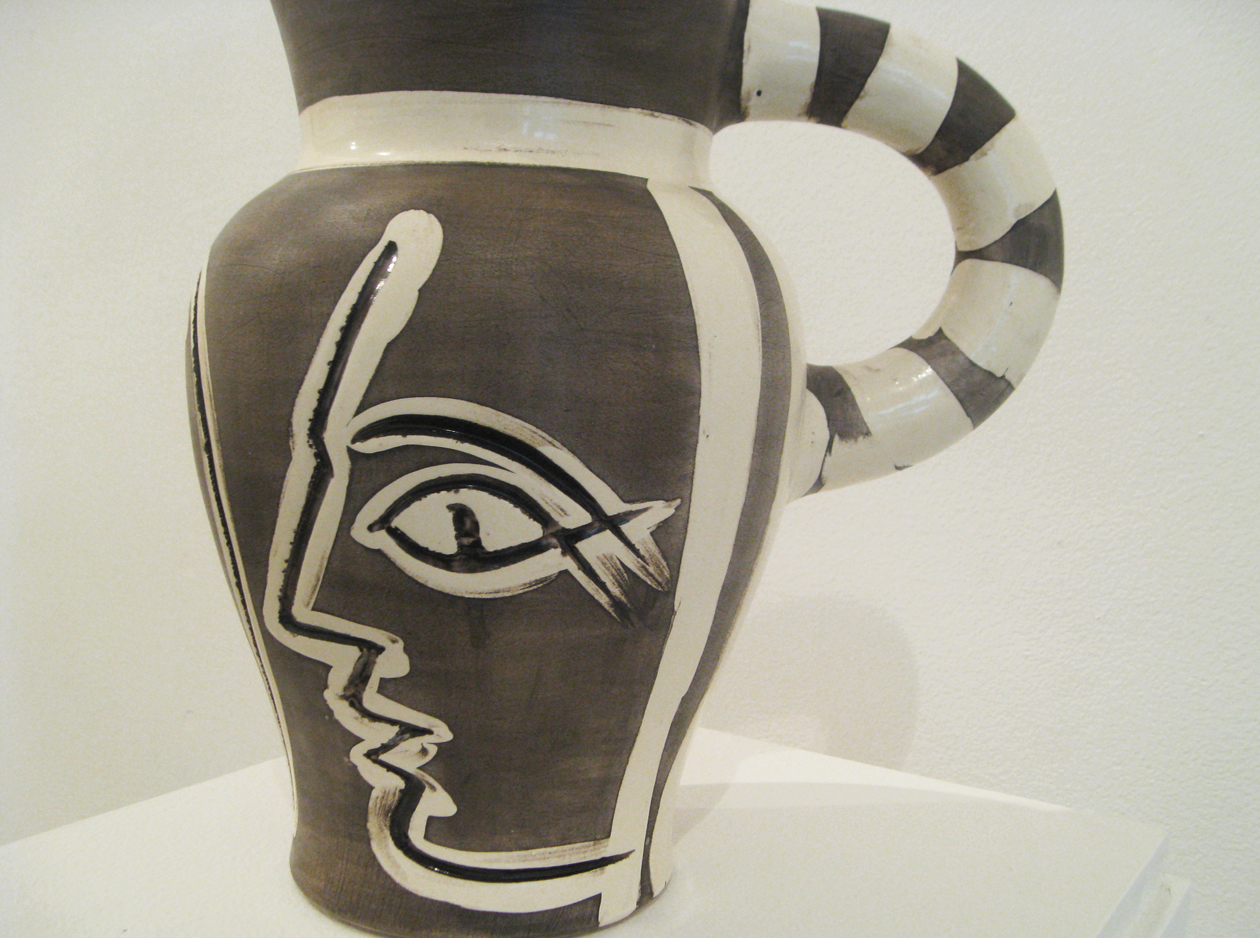
“Grey Engraved Pitcher,” 1954 (white earthenware painted in black, white and grey patina, with knife engraving and partial brushed glaze), turned pitcher, from the edition of 500.
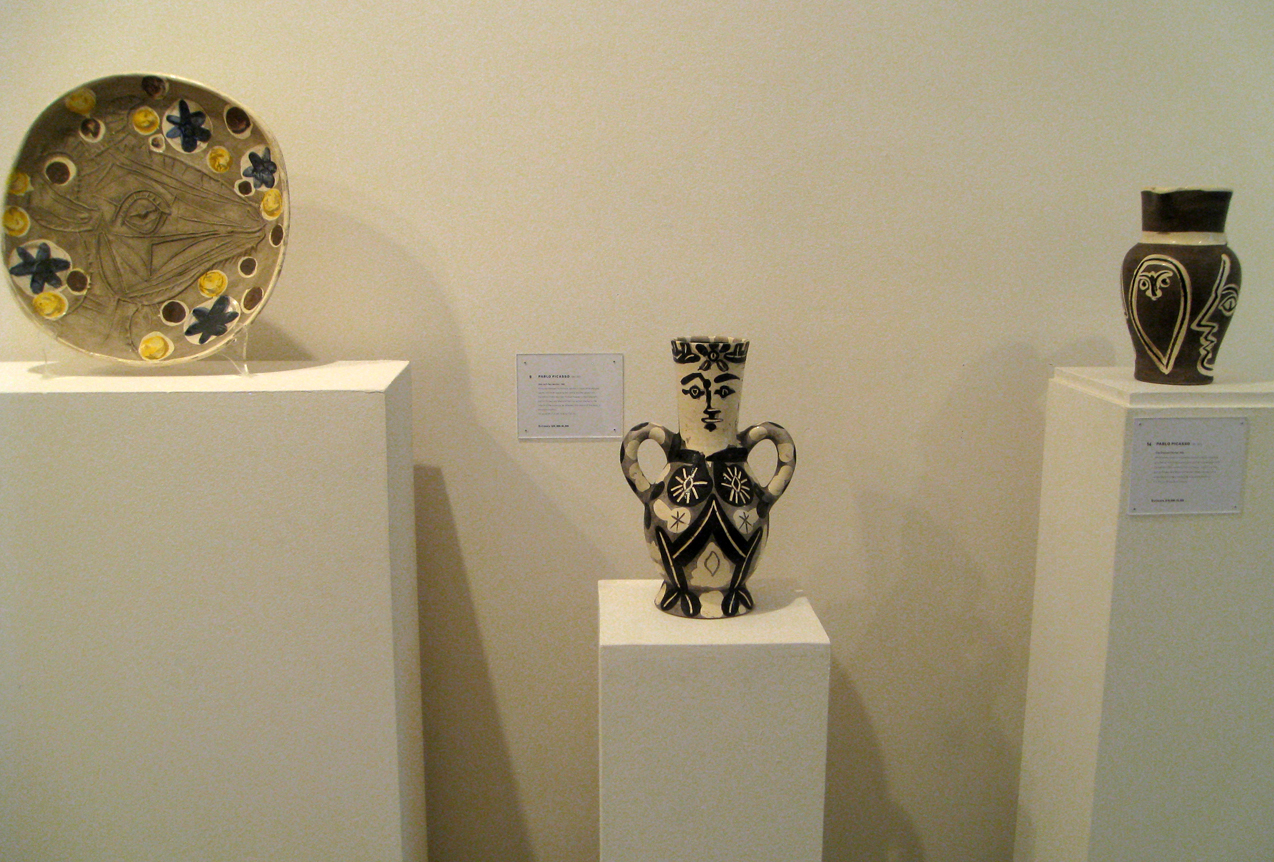
From left, “Goat’s Head in Profile,” 1952 (white earthenware painted in grey patina, brown, blue and yellow with partial brushed glaze), a round/square dish a unique variant in color; “Vase with Two High Handles,” 1953 (white earthenware painted in black, white and black patina, with knife engraving and partial brushed glaze), turned vase, from the edition of 400. “This is one of the most iconic of the Picasso ceramic editions and commonly referred to as the ‘King’”; and “Grey Engraved Pitcher,” 1954 (white earthenware painted in black, white and grey patina, with knife engraving and partial brushed glaze), turned pitcher, from the edition of 500.

“Goat’s Head in Profile,” 1952 (white earthenware painted in grey patina, brown, blue and yellow with partial brushed glaze), a round/square dish a unique variant in color.

From left, “Head with Mask, 1956 (white earthenware painted in white enamel, ivory and black, with glaze and oxide), round/square dish, inscribed ‘Madoura,’ ‘F200,’ numbered 147/200 in black. “Goat’s Head in Profile,” 1952 (white earthenware painted in ivory, blue, green, yellow, black and beige patinated ground with partial brushed glaze), round/square dish from an edition of 100.

Detail of grey and black “Goat’s Head in Profile,” plate.
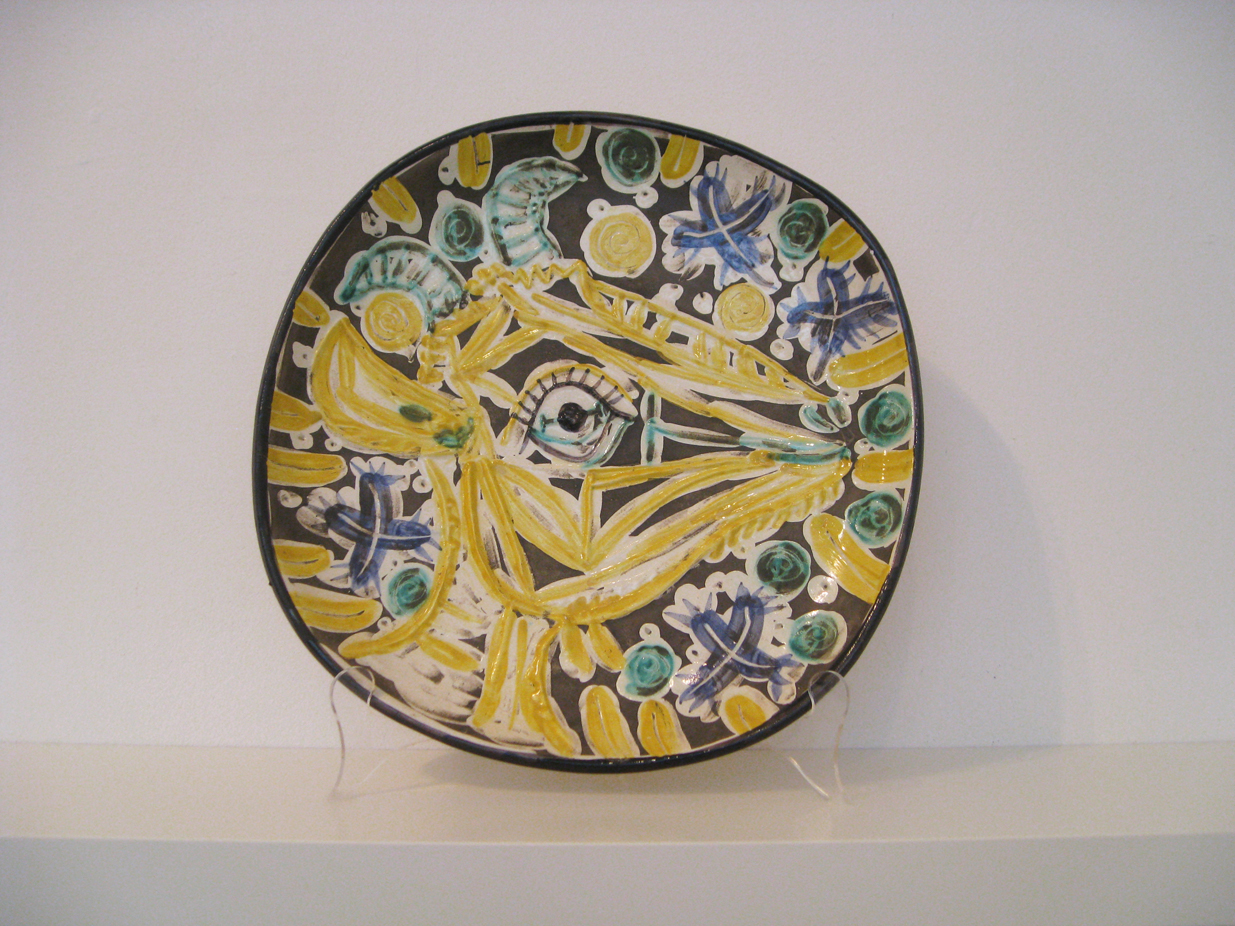
“Goat’s Head in Profile,” 1952 (white earthenware painted in black patina, white green yellow blue and black with partial brushed glaze), round/square dish numbered 33/100.

From left, “Laughing-Eyed Face” vase; “Vase with Two High Handles,” 1953 (white earthenware painted in black, white and black patina, with knife engraving and partial brushed glaze), turned vase, from the edition of 400; and “Aztec Vase with Four Faces,”
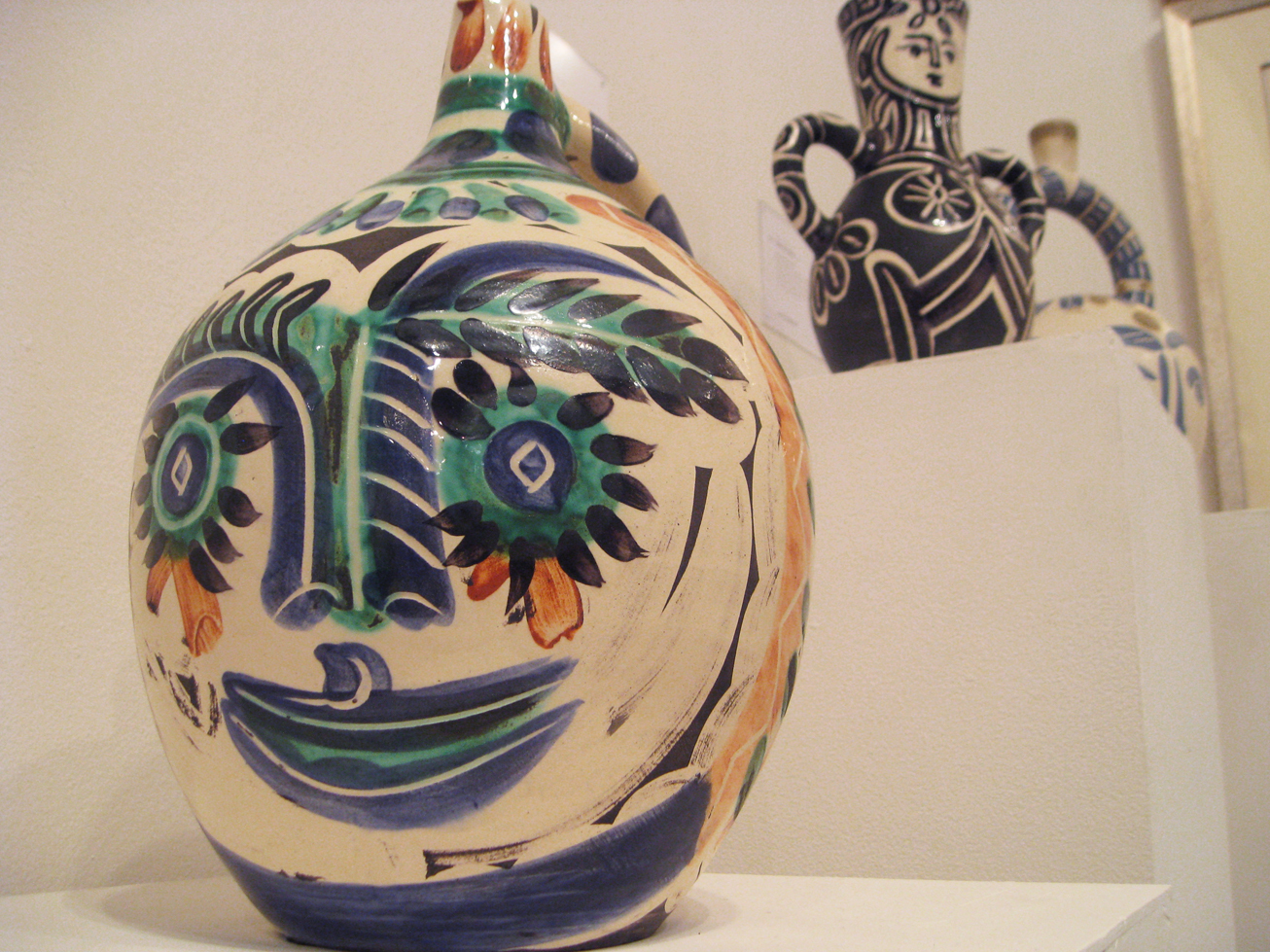
Detail of “Laughing-Eyed Face, 1969 (white earthenware painted in blue, green, red, white and black patina with knife engraving and partial brushed glaze), turned pitcher, incised ‘Edition Picasso,’ ‘Madoura,’ ‘R137,’ numbered 305/350; in background, “Vase with Two High Handles.”

“Woman Lamp,” 1955 (white earthenware painted in blue, grege and black, with knife engraving, glazed inside), turned vase, a unique variant in decoration, from the edition of 100.
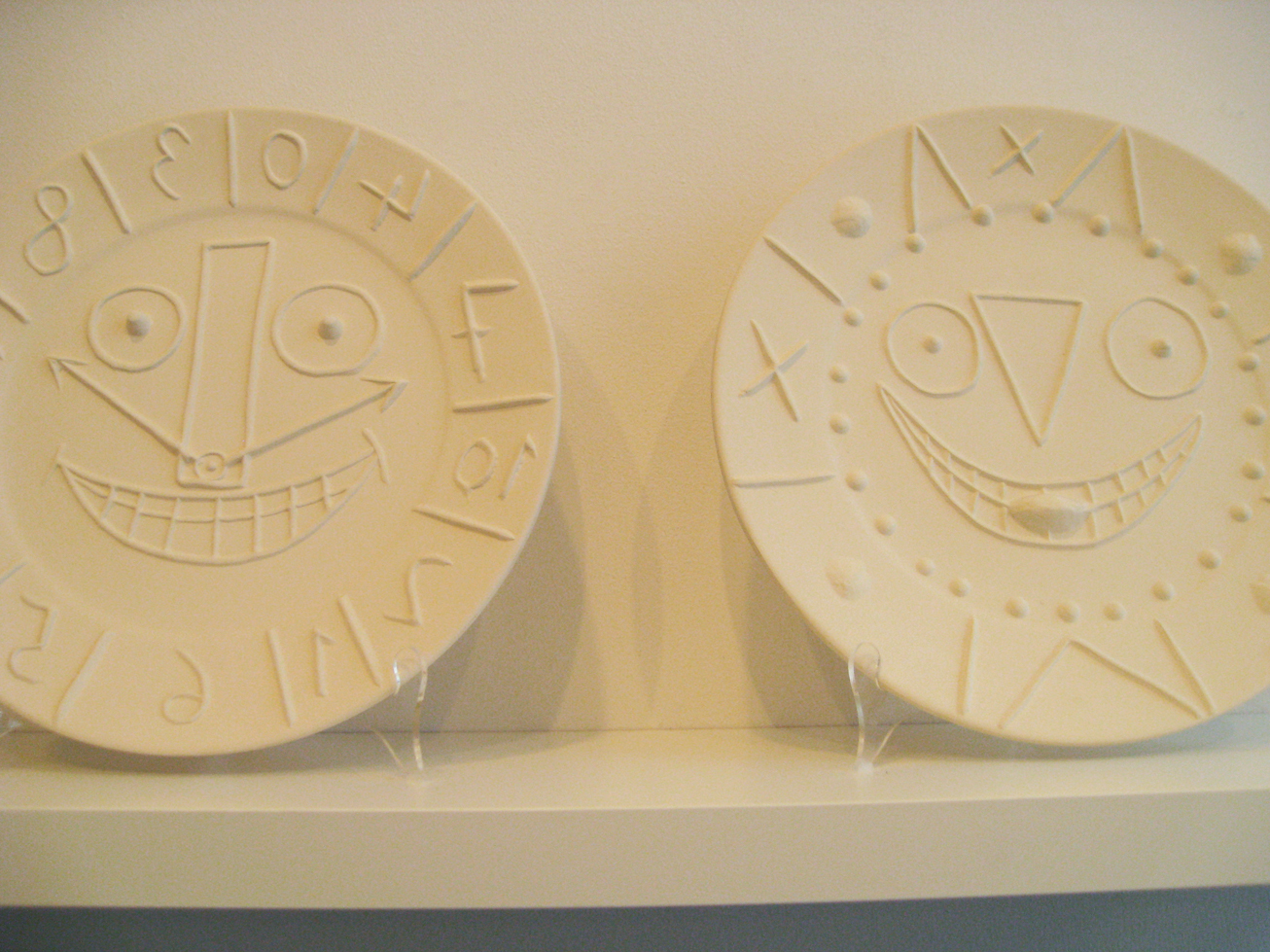
From left, “Clock with Figures,” 1956 (white earthenware) round dish, incised ‘C 105,’ numbered 60/100; and “Clock with Tongue, 1956 (white earthenware dish), incised ‘C 106,’ ‘Madoura,’ numbered 61/100.
